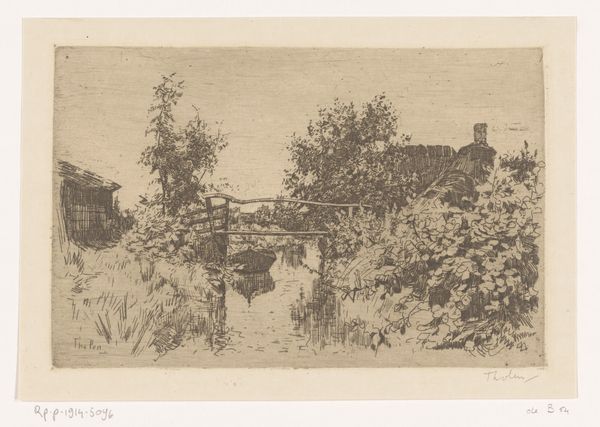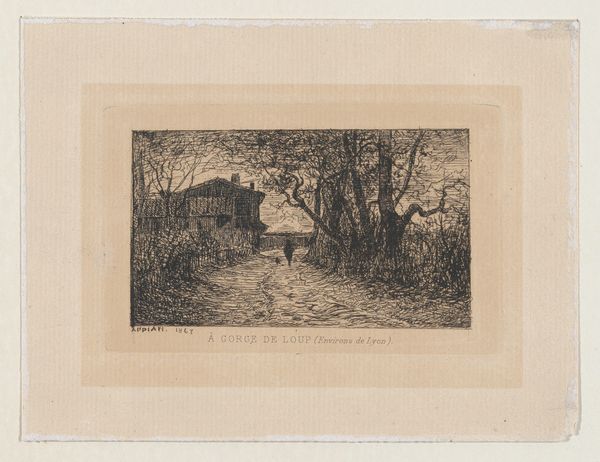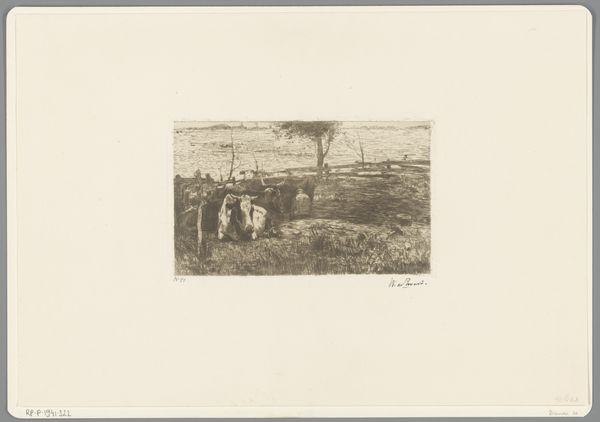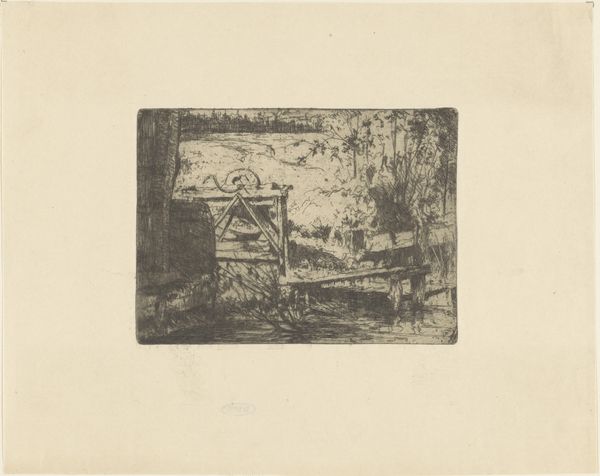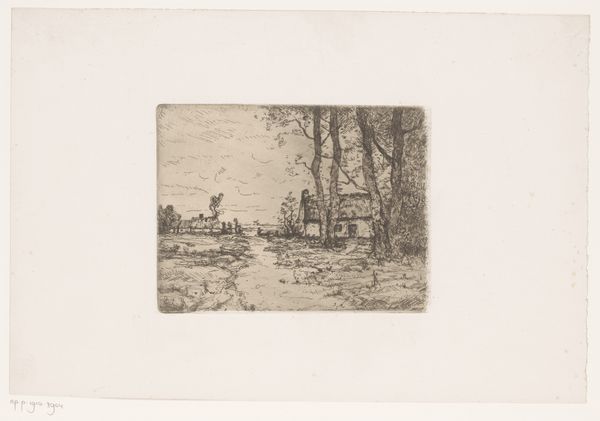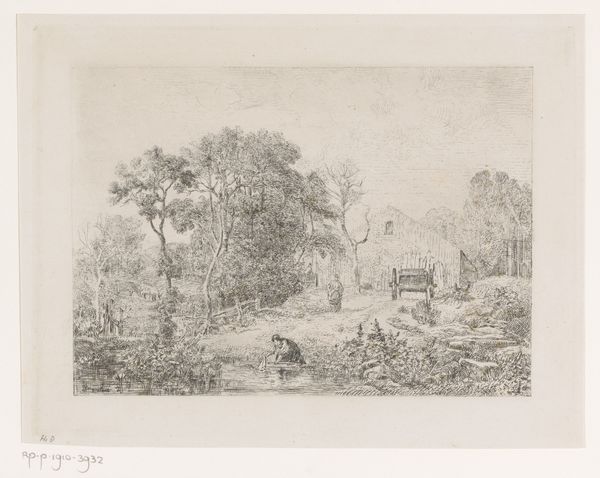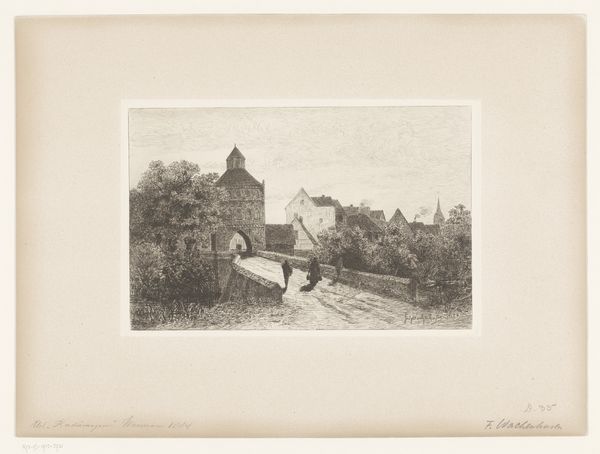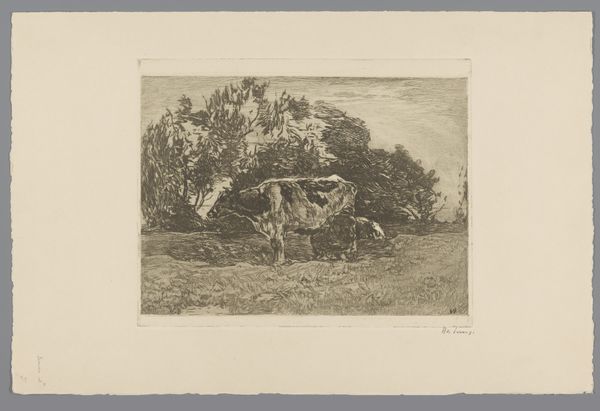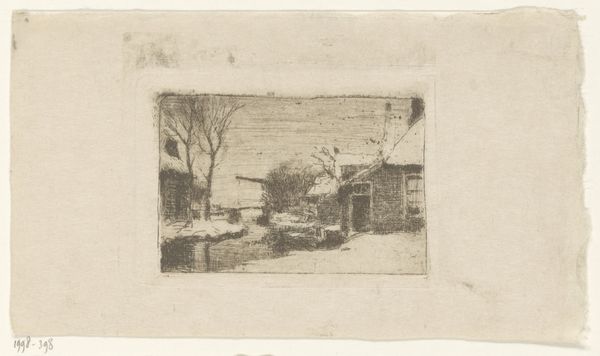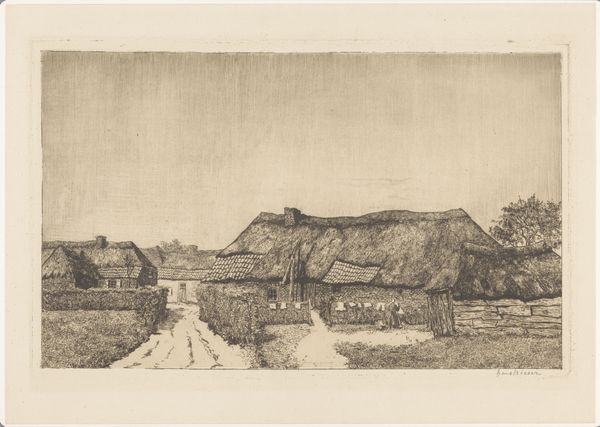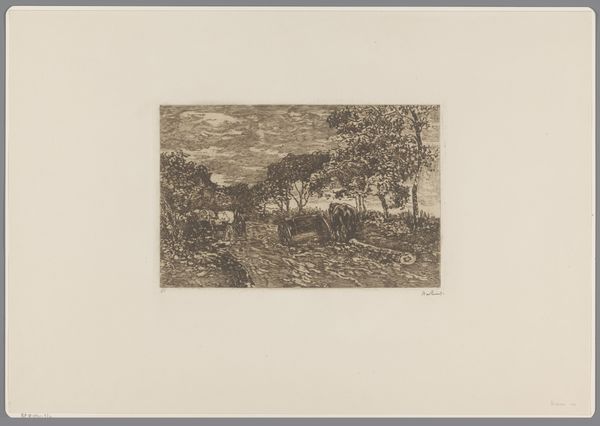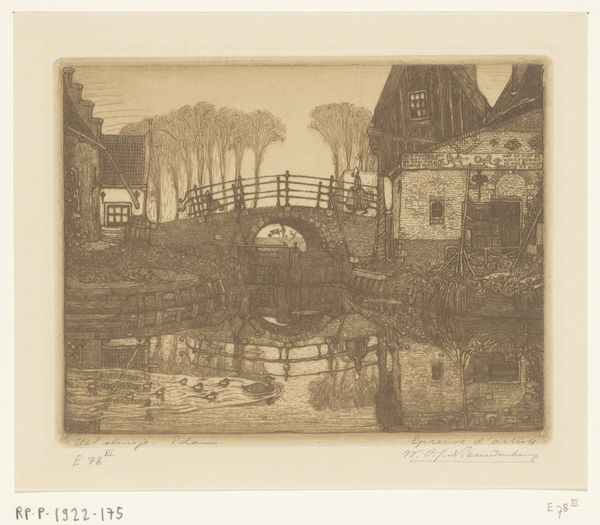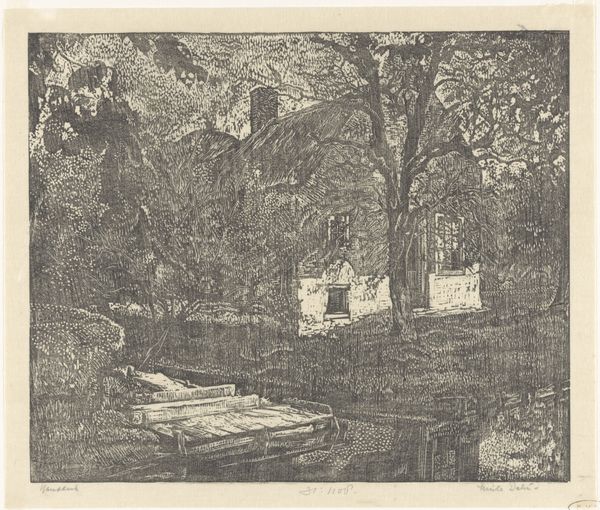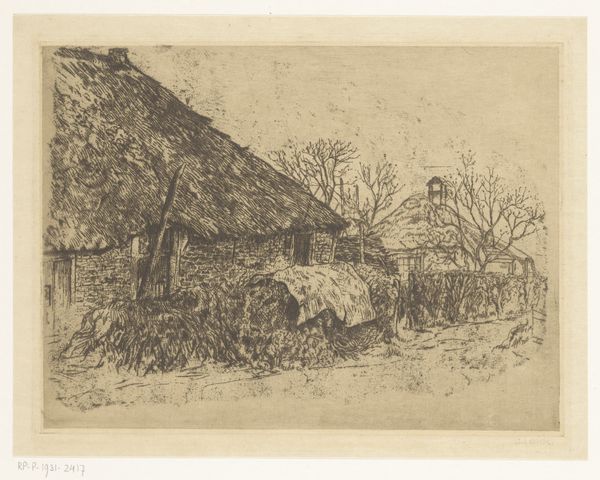
print, etching
#
dutch-golden-age
# print
#
etching
#
landscape
#
realism
Dimensions: height 99 mm, width 148 mm
Copyright: Rijks Museum: Open Domain
Anton Koster made this etching of a watermill in the Netherlands, likely in the late 19th or early 20th century. It's easy to romanticize such a scene, but the watermill was, above all, a place of work. Note how Koster emphasizes the mill's integration with the natural world, almost as if it's growing out of the landscape. This was a period of rapid industrialization, and many artists responded by idealizing rural labor. The etching technique itself, with its emphasis on line and texture, lends itself well to capturing the rough surfaces of the mill and the surrounding foliage. To fully understand this image, we might look at the changing economics of milling in the Netherlands, as well as the rise of artistic movements focused on landscape and rural life. We might also consider the role of institutions like art academies and the market for prints in shaping Koster's artistic choices.
Comments
No comments
Be the first to comment and join the conversation on the ultimate creative platform.
